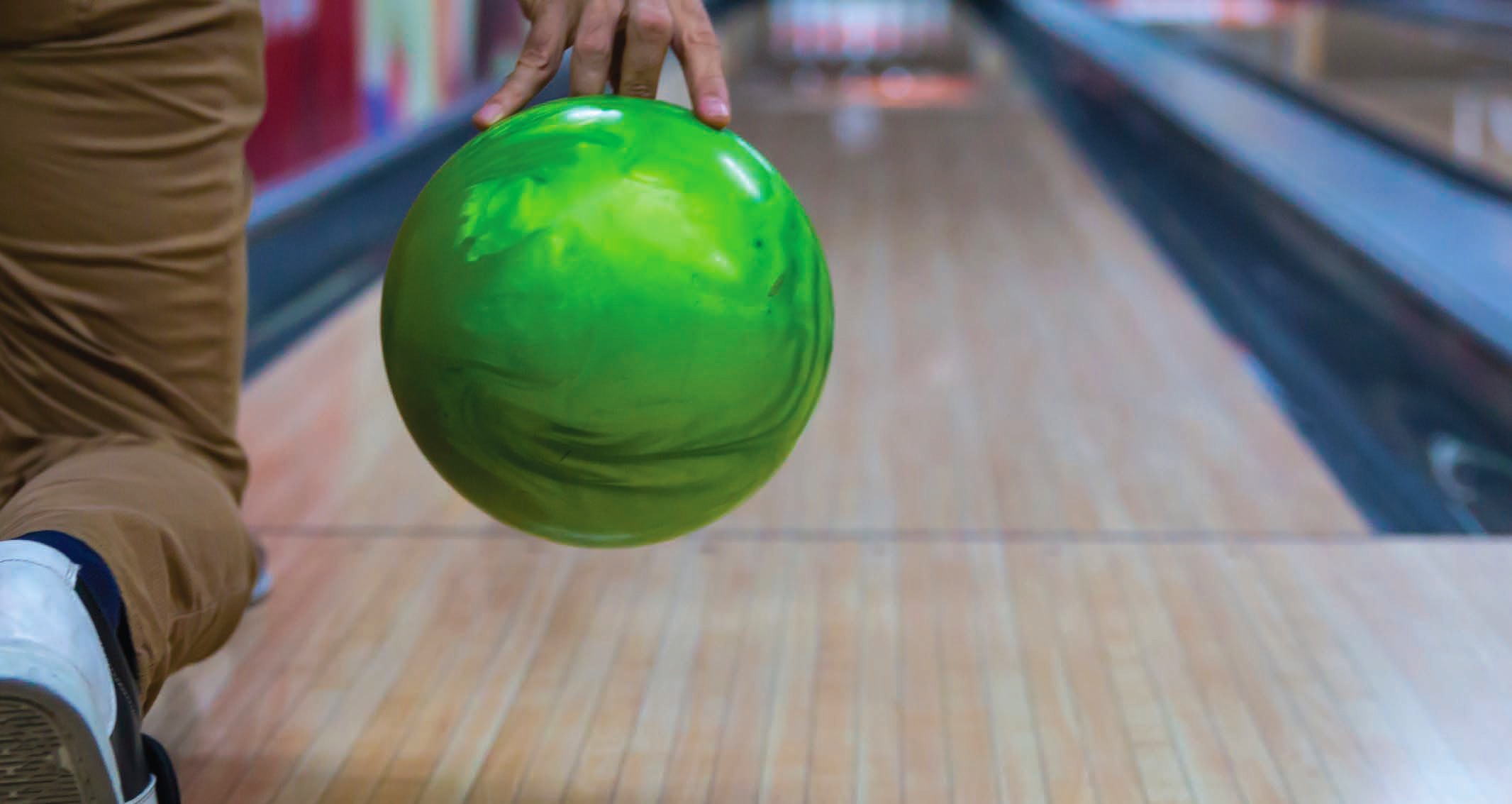The tribology of bowling
Dr. Ken Hope | TLT President's Report September 2021
Tribology impacts your daily life in ways you don’t realize.

Bowling used to be my regular weekly tribology experiment that involved friends, a 60-foot hardwood lane and a 15-pound ball.
As our lives are trending back to normal, my mind wanders into areas that I was focused on before 2020. One area that has fascinated me is the application of tribology in everyday situations. Case in point—bowling! Bowling, you say? Yes, this used to be my regular weekly tribology experiment that involved friends, a 60-foot hardwood lane and a 15-pound ball.
Initially, I thought there was very little involved here, but as I learned more, it seems there are quite a lot of considerations if you want to maximize your score—or, in my case, minimize my embarrassment by the lack thereof! It seems simply hurling the ball toward the head pin can score a strike, but the size of the target (the gap between the 1 and 3 or 1 and 2 pins) for knocking all of the pins down gets considerably larger if you hook the ball—that is, the ball comes in at an angle and with spin that accelerates into the pins.
Now, you might be saying, “Uh Ken, I still haven’t heard anything about tribology.” Well, I shared a little background to tell you this. There is oil on the lane, but not over all the lane equally, and the weight, spin, angular momentum and speed of the ball all have a part in deciding the end destination of those pins. In tribology, we know that an oil can minimize the friction of systems in relative motion. Furthermore, the normal force pushing those surfaces together also is involved in the equation. Here, the weight of the ball and gravity can account for that force. The type and placement of the lane oil will lubricate the surface and the ball as it rolls and spins once it leaves your hand.
Furthermore, that placement of the oil is dynamic since, as the lane is used, the ball will push the oil down the lane. Also, the last five feet or so may have much less oil, and it is there that the spin of the ball accelerates its momentum into the pins due to the increased friction. All of this must be in a careful balance to allow the ball to strike the target and knock down all of the pins. If the speed is too high, then it may not hook enough; if the speed is too slow, it will hook too much. The same goes for the amount of spin, and so the speed versus rotational spin is very important. Once this is dialed in and you have sent all 10 pins off in a loud but satisfying crash, you will find that adjustments will need to be made due to the constant changes in the lane conditions (and the bowler!).
This is all very interesting, but still, you may be wondering what this has to do with you, particularly if you are not into bowling. My point is this: tribology is indeed everywhere, and we always have more to learn! You may notice some aspect of tribology in your daily life that you hadn’t before. Furthermore, there are many ways to expand the awareness of tribology to those that may not have noticed it before. We have a significant challenge in getting the word out to increase awareness about tribology and lubrication since there are so many people that are touched by what we do in STLE but may not know how we impact their everyday lives. Imagine the response when you load up your friends and family for an evening at “your tribology laboratory” when you arrive at your local bowling lanes! I am sure they will be thrilled.
Dr. Ken Hope, CLS, is global PAO technical services manager for Chevron Phillips Chemical in The Woodlands, Texas. You can reach him at ken.hope@cpchem.com.